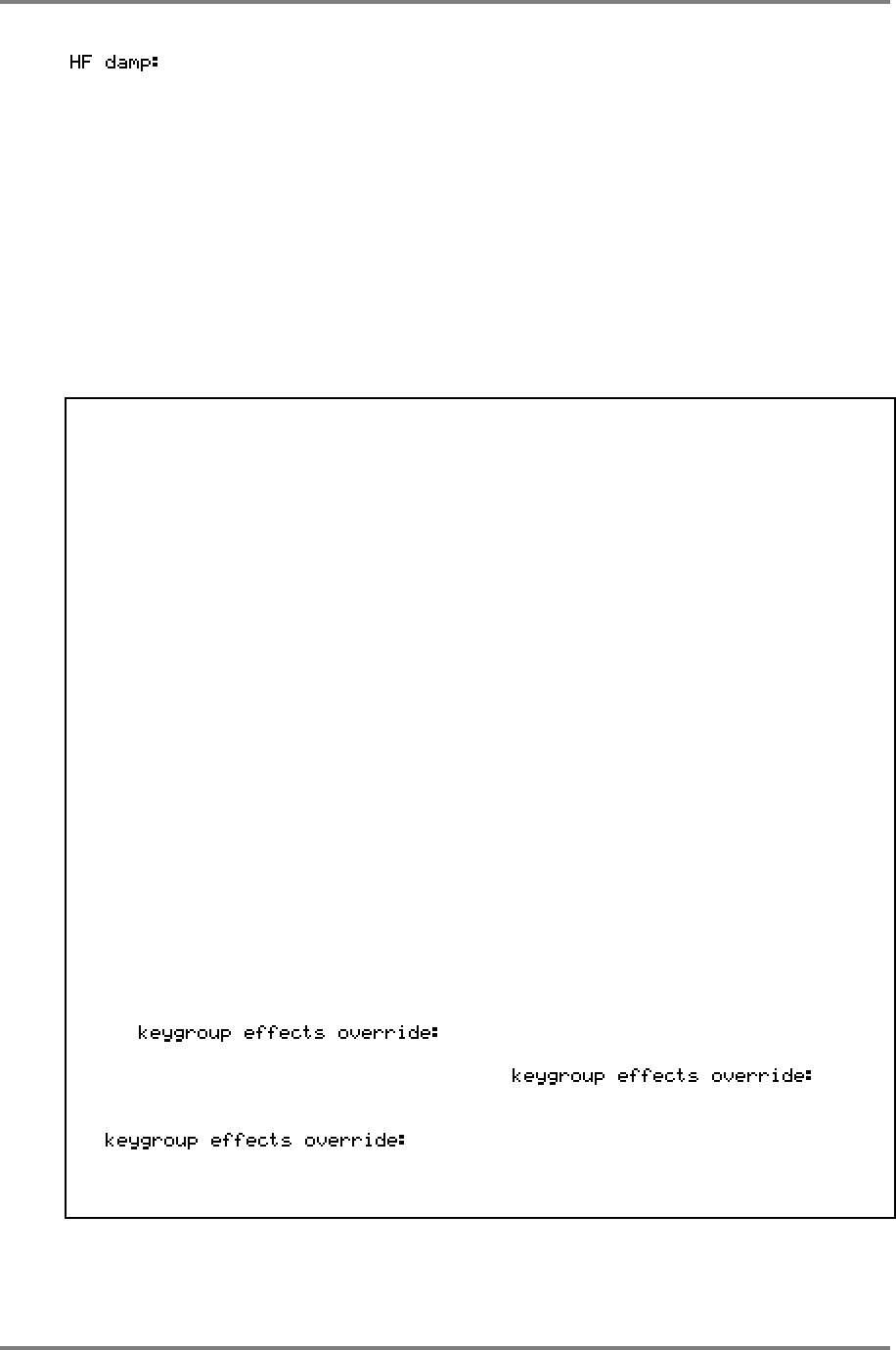
EFFECTS EDIT
CD3000XL OperatorÕs Manual Page 199
As we saw in the delay section, as the sound echos so it normally gets
progressively duller. The same is true of reverb. As the sound is bouncing all
over the place, each time it hits a surface, that surface will absorb some high
frequencies. If the room has a lot of furniture, curtains, drapes, cushions,
whatever, the high frequencies are absorbed even more rapidly (which is why
your living room doesn’t have a pronounced reverberant quality). This has the
effect of the reverb decay getting duller in tone as it dies away. It is very
uncommon for a room to have absolutely no damping factor and LFDAMP and
HFDAMP allow you to re-create this phenomena.
If you are trying to simulate a heavily damped environment, set LFDAMP to
10Hz (i.e. bypass) and lower the HFDAMP parameter. If you are trying to
simulate a highly reflective environment, raise the HFDAMP parameter. To
really emphasise the high frequency content (i.e. to simulate a tiled room), you
may try raising the LFDAMP frequency.
SOME TIPS ON USING REVERB
• Firstly, don’t overdo it! One common mistake is to smother a sound in reverb. This just
results in an indistinct, ‘mushy’ sound. A lot of reverb can be nice on slow, floating pads
and strings, the musical content of which is fairly sedate but, generally, more reverb does
not guarantee a better sound - often the reverse, in fact!.
• Be aware that using long reverbs on fast moving sounds (i.e. fast sequences or arpeggios)
can cloud the music creating an indistinct ‘blur’ behind the music (unless the reverb is
mixed quite a way back). A nice ROOM reverb on such parts is usually sufficient. If you can,
tweak the decay time so that it doesn’t hang over into adjacent notes too much.
• Small rooms and the like are good on bass sounds. You may also like to try setting the
LFDAMP parameter so that only the high frequency content of the sound is reverberated.
This will keep the ‘straight’ portion of bass end free for the bass to be heard clearly. Avoid
long, boomy reverbs on bass parts as this will clutter up the bottom end of the music.
• To create more space between the reverb and the direct sound, set longer predelay times.
This will allow the attack of the sound to be heard without ‘smudging’ it with reverb. For
example, when applying reverb to a snare drum sound, a bit of predelay can help separate
the direct snare sound from the reverb.
• To make a sound seem further away, send a lot of signal to the reverb and pull the level of
the direct signal back a bit in the L/R outputs. To make a sound VERY distant, pull the
direct sound out completely!
• When putting drum kits through the reverb, watch out for the hi-hat. Fast hi-hats through
the reverb can make the overall mix very ‘splashy’ as the high frequencies get
reverberated. If you get this problem, take the high hat out of the reverb altogether using
the function in the drums program.
With drum and percussion programs, use the function
to have more or less reverb on some drums than on others (for example, snares can take a
lot of reverb but bass (kick) drums usually have less). The
function allows you to send different drum sounds in a
program to different effects types (for example, gated on the bass drum, large hall on the
snare, medium hall on the toms, small room on selected percussion, etc.) although in a
multi-timbral setup this will use up all available effects channels.


















